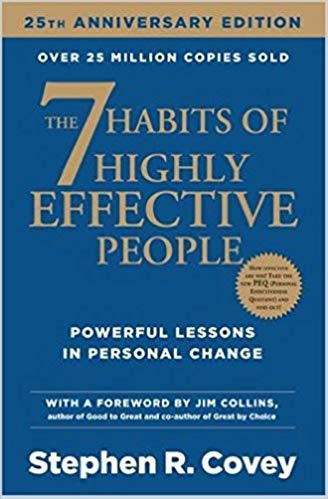

This article is an excerpt from the Shortform summary of "The 7 Habits of Highly Effective People" by Stephen Covey. Shortform has the world's best summaries of books you should be reading.
Like this article? Sign up for a free trial here .
How do you make sure you have time for your high-priority, Quadrant II goals, while also leaving room in your schedule for the unexpected? Delegate.
To delegate means to assign tasks to others people or groups. Delegating is a way to manage time effectively, and helps you self-manage. There are two types of delegation, and learning how to delegate effectively will help you achieve the priorities you identified in your quadrant 2.
What are the Types of Delegation?
Some people resist delegating tasks to other people because of the up-front time investment: You have to explain what needs to be done and how to do it, and the other person might not do as good a job as you could’ve done. Navigating around this is an important part of learning how to delegate effectively.
How to delegate effectively means delegating tasks that can be performed by someone else. This is the essence of a Quadrant II activity: instead of reacting to the urgent need to just get a task done, you’re making a short-term investment that frees you up in the long term to spend your time and energy on more important and valuable activities. In addition, both people benefit because the delegator gains more time and the person being delegated to gains knowledge and experience.
Delegation creates the difference between a producer and a manager; a producer does whatever’s needed to achieve a result, while a manager capitalizes on people and systems to increase production capability. When a producer spends one hour on a task, she gets one unit of results, but when a manager spends one hour of effort she can create tens or hundreds of units of results, depending upon the size of the team she’s managing. A manager knowing how to delegate effectively is as important as a producer doing that task correctly. There are two forms of delegation: gofer delegation, and stewardship delegation. One is far superior than the other.
Gofer Delegation
The first type of delegation is gofer delegation — when a manager simply instructs her team members to “go for this, go for that.” Gofer delegation is not very effective because the manager is essentially micromanaging her team, focusing on the methods they use rather than the results they achieve. In addition, gofer delegation doesn’t free up the manager to attend to other tasks if she is busy supervising every action her team takes. All in all, gofer delegation is not the type of delegation to pursue when deciding how to delegate effectively.
A manager with a gofer delegation paradigm are hands-on and may feel very involved, but her hovering doesn’t give her team members space to develop any personal investment in the results. If your boss is telling you every step to take and monitoring every move, you’ll probably get to the point where you’re just going through the motions to appease her. In contrast, if your boss empowers you to handle a task or project and says that she trusts you to decide how to accomplish it, you’re more likely to feel responsible for the results. Choosing how to delegate effectively can drastically alter results, and is an important part of management.
Stewardship Delegation
The second approach in the example above is stewardship delegation. Stewardship delegation focuses on the results instead of the methods, giving team members the freedom to choose their approach and have a greater stake in the results. This requires managers to trust their employees, and to allow time for employees’ learning curve to reach that level of trust. Of the two types of delegation, stewardship delegation is the far more effective type of delegation, and will help much more when choosing how to delegate effectively.
Effective stewardship delegation requires managers to clearly communicate her expectations in five areas:
- Results: The team member must understand what results she is responsible for accomplishing.
- Guidelines: While the manger shouldn’t dictate the methods for accomplishing a goal, it’s important that she explain the parameters so the team member doesn’t unknowingly violate rules or standard operating procedures; doing so can hinder the team member’s confidence and sense of empowerment. On the other hand, the manager should also educate the employee about methods that don’t work so that the employee doesn’t waste her time reinventing the wheel.
- Resources: Team members need to understand what resources are available to help them accomplish the task, whether that includes manpower, money, technology, or support from the organization.
- Accountability: Managers must explain the quality standards that will be used to measure the results, and when results will be evaluated.
- Consequences: Team members need a clear understanding of the consequences of success — such as a financial bonus or job promotion — and of failure.
When using stewardship delegation, adapt your approach to the person and situation. If you’re delegating to an immature person, narrow the results and provide more guidelines, resources, accountability check-ins, and consequences. If you’re delegating to a more mature person, you can give her a larger number or more difficult results to achieve while offering fewer guidelines and check-ins.
Delegating is an important part of achieving quadrant 2. Learning how to delegate effectively and utilizing stewardship delegation will help you manage your time and yourself, and feel confident in your tasks.
———End of Preview———

Like what you just read? Read the rest of the world's best summary of "The 7 Habits of Highly Effective People" at Shortform . Learn the book's critical concepts in 20 minutes or less .
Here's what you'll find in our full The 7 Habits of Highly Effective People summary :
- How to prioritize the hundred tasks you have to focus on the one or two that really matter
- The right way to resolve every disagreement and argument
- How to avoid burning out and succeed over 20+ years






